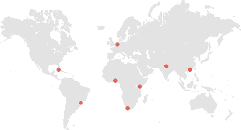Now that Tema is 65 years old, the first built neighborhoods have become overcrowded and deteriorated. Rather than a piecemeal redevelopment, the situation asks for an update of Doxiadis’ masterplan: an update in which the unfinished parts of the city are addressed, as well as the question of social inclusivity in a market driven development process, the relation with the self-organized settlement of Ashaiman and the means of mobility that connect them.
The Greater Accra region around the capital of Ghana is home to 4 million people and a magnet for migrants from the countryside in Ghana and surrounding countries. All of these migrants are attracted by its economy, which is the fastest growing of all African countries. Migration flows continue to expand up to such a degree, that it is likely that the complete 500 kilometer stretch between Accra and Lagos (Nigeria) will be fully urbanized within decades – something which was already predicted in the early 1960s by the Greek planner Doxiadis, the designer of the city of Tema.
As it turns out, Doxiadis was indeed right about the speed of urbanization, but he underestimated the mode of urban expansion. While he proposed a rational grid system to contain the dynamics of the growing city, urbanization in the last decades has to a large degree taken the shape of informal settlements, mixed with a few planned urban settlements which originate from the postwar period around Independence in 1957. Back then, the first Prime Minister of Ghana, Kwame Nkrumah, implemented a national vision that reflected the pride and nationalism of the new nation-state by means of modernizing and industrializing the country, building universities, libraries, churches, creating housing, neighborhoods and cities.
Tema is an example of these ambitions: a New Town with 250.000 inhabitants and a harbor and industrial terrain just east of Accra, planned in detail from street furniture to infrastructure in the 1960s. This New Town’s future looked bright until 1965, when Nkrumah was ousted and both the pace of implementation and the ambitions to complete the city faded. Large parts of the city (most importantly the city center and the main axis) were never finished and have remained barren up to today. That aside, the ever changing attitudes towards subsidized housing have led to the deterioration of the city’s overall housing stock.
Ashaiman and Urban Mobility
On the borders of the city, another phenomenon asks for Tema’s attention: because of the city’s incapability to cater for the poorest migrants (which it shares with practically every other New Town), low-income newcomers have built a large, self-organized settlement, called Ashaiman, which now houses 300,000 residents. Most of the residents of Ashaiman are harbor workers, who commute through Tema every day. The stark contrast between the spacious planned city of Tema and the self-organized Ashaiman provides a good opportunity to explore the symbiotic (economic, social and mobility) relationship between these urban developments.
INTI is particularly interested in the improvement of urban mobility and transport of people and goods for the harbor (trucks and containers) and for the workers (bicycling and buses). In order to update the Master Plan of Tema, one must be able to both take distance and zoom in: in order to get a complete image of Tema, one must be able to see the city as part of the urbanizing zone of Accra-Lagos, but also become familiar with the city on street level, in search of new models to combine transport, traffic, the informal kiosk and low-tech mobility options like transport by bike.
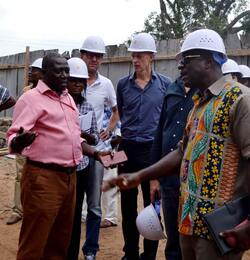
Site visit to new housing being built in Tema’s Community I, with a.o. Joe Abbey (TDC) and Prof. Rients Dijkstra (TU Delft), November 9, 2015
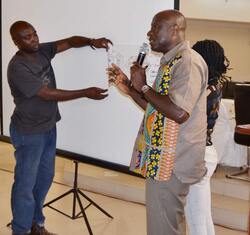
Architects Immanuel Sirron-Kakpor and Sam Afram (KNUST) presenting the outcomes of their team during the workshop at TDC, November 9, 2015
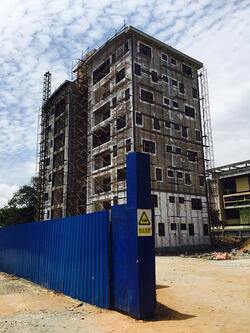
Chinese contractors are building infill apartment blocks against the backdrop of Maxwell Fry & Jane Drew’s walkup flats from the 50’s in Tema, Community I. (photo by M. Provoost)
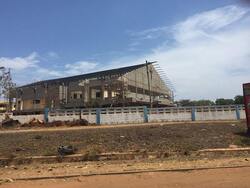
One of the many unfinished churches along the main roads of Tema. (photo by M. Provoost)
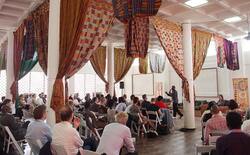
Urban Design Event: ‘Accra Revisited’ held from February 25th till 27th in Accra, Ghana. Organised by DASUDA and ArchiAfrica, participation by M. Provoost. (photo by DASUDA)



